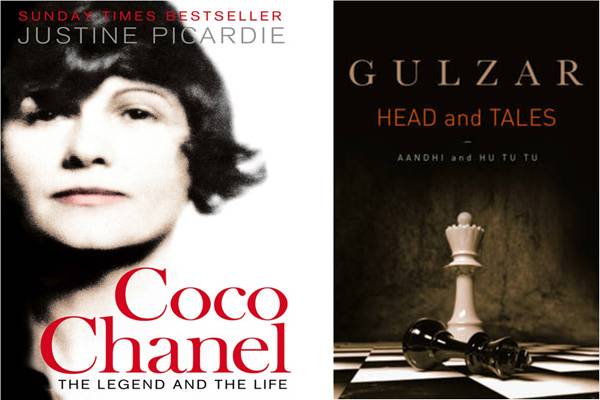
For Prophet and Tsar: Islam and Empire in Russia and Central Asia
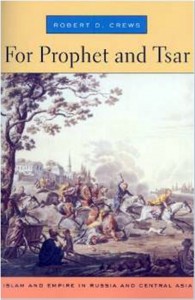
Robert D Crews
Harvard University Press [hardback], 2006
PRs 1,800 (on discount)
Russia occupies a unique position in the Muslim world. Unlike any other non-Islamic state, it has ruled Muslim populations for over 500 years. Though Russia today is plagued by its unrelenting war in Chechnya, its approach toward Islam once yielded stability. In stark contrast to the popular “clash-of-civilizations” theory that sees Islam inevitably in conflict with the West, Robert D Crews reveals the remarkable ways in which Russia constructed an empire with broad Muslim support.
In the eighteenth century, Catherine the Great inaugurated a policy of religious tolerance that made Islam an essential pillar of Orthodox Russia. For ensuing generations, tsars and their police forces supported official Muslim authorities willing to submit to imperial directions in exchange for defense against brands of Islam they deemed heretical and destabilizing. As a result, Russian officials assumed the powerful but often awkward role of arbitrator in disputes between Muslims. And just as the state became a presence in the local mosque, Muslims became inextricably integrated with the empire and shaped tsarist will in Muslim communities stretching from the Volga River to Central Asia.
For Prophet and Tsar draws on police and court records, Muslim petitions, denunciations, and clerical writings – not accessible prior to 1991 – to unearth the fascinating relationship between an empire and its subjects. As America and Western Europe debate how best to secure the allegiances of their Muslim populations, Crews offers a unique and critical historical vantage point.
What people are saying: “Without minimizing the tensions, violence, and brutality in evidence at key moments in the relationship, he [Crews] convincingly argues that Russia would not have been able to rule for 500 years over what by the end was one of the world’s largest Muslim populations had there not been a symbiosis between empire and Islam” (Foreign Affairs).
Heads and Tales: Aandhi and Hu Tu Tu
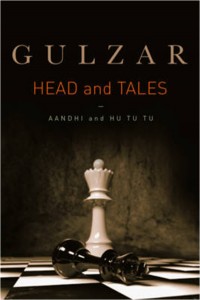
Gulzar
Rupa Publications [paperback], 2014
PRs 1,000
Aandhi chronicles the lives of Aarti and JK who part ways a few years after their marriage, still in love but divided on principles. JK, the dreamy poet, is a complete contrast to the fiery, ambitious Aarti who goes on to become an influential political leader. They meet years later in a chance encounter full of poignant regret.
In Hu Tu Tu, Panna Barve, the daughter of Malti Barve, a power-hungry politician, and Aditya Patel, the son of a rich businessman, grow up seeing their parents forge ahead, fulfilling their ambitions, ruthlessly squashing everything that comes in the way of their success. Unable to come to terms with the single-minded cruelty of their parents, the young couple is forced to take the ultimate step.
Heads and Tales brings together in an engaging narrative form two of Gulzar’s best-known films. Brilliantly translated by filmmaker Meghna Gulzar, this volume will appeal to fans of these classic movies as well as to all lovers of strong well-told stories. Poet, storyteller, director, scriptwriter and lyricist, Gulzar is a towering figure of contemporary Indian literature and cinema.
What people are saying: “Gulzar in sparkling form… [with his] consummate ease handling a subject with obvious political overtones” (The Hindu).
Four Centuries of Rajput Painting: Mewar, Marwar and Dhundhar
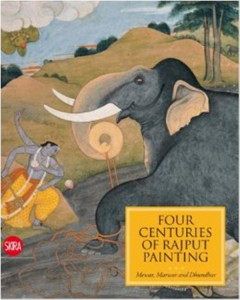
Vicky Ducrot
Skira [hardback], 2009
PRs 4,500
This remarkable catalogue represents one of the richest-known repertoires of Indian painting: it documents almost all the schools of painting in India and, in particular, those of the Rajput courts. The most significant miniatures come from the courts of the three main dynasties of Rajasthan, those of the Sisodia, Rathore, and Kachwaha clans. The collection also contains important examples of Mughal and Deccan painting, a group of 36 Pahari pictures and paintings from Central India.
The volume presents, through stunning images, a lavish selection of illustrations of sacred and literary texts, documenting the stylistic features and choices of theme of various cultural and religious areas of India between the sixteenth and eighteenth centuries. But it also provides important information on the painters, customs, and cultural interests of the different royal courts and on the types of text illustrated. It is an invaluable aid for anyone who wishes to understand the multifaceted art of the Indian subcontinent.
Coco Chanel: The Legend and the Life
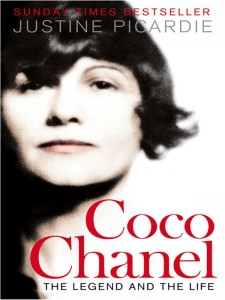
Justine Picardie
Harper Collins [paperback], 2013
PRs 1,200
Sleek. Chic. Notoriously guarded. Welcome to the secret world of Gabrielle Chanel. The story of Chanel begins with an abandoned child, as lost as a girl in a dark fairytale. Unveiling remarkable new details about Chanel’s early years in a convent orphanage and her flight into unconventional adulthood, Justine Picardie explores what lies beneath the glossy surface of a mythic fashion icon.
Throwing new light on her passionate and turbulent relationships, this beautifully constructed portrait gives a fresh and penetrating look at how Coco Chanel made herself into her own most powerful creation. An authoritative account, based on personal observations and interviews with Chanel’s last surviving friends, employees and relatives, it also unravels her coded language and symbols, and traces the influence of her formative years on her legendary style.
Feared and revered by the rest of the fashion industry, Coco Chanel died in 1971 at the age of 87, but her legacy lives on. Drawing on unprecedented research, Picardie brings her fascinating, enigmatic subject out of hiding and uncovers the consequences of what Chanel covered up, unpicking the seams between truth and myth in a story that reveals the true heart of fashion.
From the book: “Saint Laurent has excellent taste. The more he copies me, the better taste he displays.”
The Indian Bourgeoisie: A Political History of the Indian Capitalist Class in the Early Twentieth Century
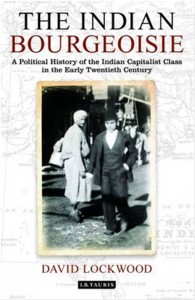
David Lockwood
I B Tauris [hardback], 2012
PRs 12,335
The complex and hard-fought movement for political freedom in India coincided with the rise of a wealthy capitalist class of Indian industrialists who had profited under British rule. By 1947, these prominent businessmen had forged a partnership with the socialist-led Indian National Congress, and supported Jawaharlal Nehru’s implementation of a centrally planned economy.
In this political history of modern India, David Lockwood traces the roots of this capitalist class, concentrated in Bombay, Calcutta and the west Bengal coal-mining region, and examines British economic policy in the nineteenth century. Indian capitalists, such as J. R. D Tata of Tata Steel, established powerful relationships with domestic governments throughout the period, holding indigenous industrial conferences and supporting the swadeshi movement, which aimed to promote Indian-manufactured goods. The Indian Bourgeoisie is a unique and important contribution to the lively debate on the role of India’s capitalists during the Raj and throughout the early years of independence.
What people are saying: “It is very surprising that this exciting topic has not received greater academic and research attention in the past, and Professor Lockwood is to be warmly commended for identifying this peculiar gap in the literature. It is a most important thread in the story of the invention of modern India” (Nigel Harris, Emeritus Professor of the Economics of the City, University College London).

